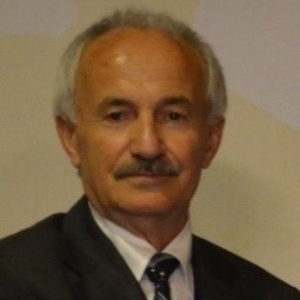Title : Displacive Characterization of Thermal and Mechanical Transformations in Shape
Abstract:
Some materials take place in class of advanced smart materials with adaptive properties and stimulus response to the external changes. Shape memory alloys take place in this group, exhibiting a peculiar property called shape memory effect, which is characterized by the recoverability of two certain shapes of material at different temperatures. These alloys have dual characteristics called thermoelasticity and superelasticity, from viewpoint of memory behavior. Thermoelasticity is initiated by cooling and deformation processes and performed thermally on heating and cooling. Superelasticity is performed by stressing and releasing material at a constant temperature in parent phase region, and shape recovery is performed simultaneously upon releasing the applied stress. Superelasticity is performed in non-linear way; stressing and releasing paths are different in the stress-strain diagram, and hysteresis loop refers to energy dissipation. Thermal memory is governed by two successive structural transformations, thermal and stress induced martensitic transformations, in crystallographic basis. Thermal induced martensite occurs on cooling with the cooperative movement of atoms in two opposite directions, <110 > -type directions on the {110}-type plane of austenite matrix by means of lattice invariant shear, along with lattice twinning. These structures turn into detwinned martensitic structures by stressing by means of stres induced transformation. Motion of atoms is confined to the interatomic distances, and martensitic transformations exhibit displacive character, and neighborhood of atoms does not chance. Superelasticity is also result of stress induced martensitic transformation and ordered parent phase structures turn into the detwinned martensitic structures. Lattice invariant shear is not uniform in copper-based shape memory alloys, and cause to the formation of long-period layered martensitic structures with lattice twinning on cooling. Copper based alloys exhibit this property in metastable beta-phase region, which has bcc based structures at high temperature parent phase field. Lattice invariant shear is not uniform in these alloys and cause to the formation of complex layered structures, like 3R, 9R or 18R structures depending on the stacking sequences, on the stacking sequences on the close-packed planes of the ordered lattice.
In the present contribution, electron diffraction and x-ray diffraction studies performed on two copper based CuZnAl and CuAlMn alloys. Electron diffraction patterns and x-ray diffraction profiles exhibit super lattice reflections inherited from the parent phase structure, due to displacive character of the transformation. Specimens of these alloys aged at room temperature in martensitic condition, and a series of x-ray diffractions were taken duration aging at room temperature. Reached results show that diffraction angles and peak intensities change with aging time at room temperature. Some of the successive peak pairs providing a special relation between Miller indices come close each other, and this result leads to the rearrangement of atoms in diffusive manner



